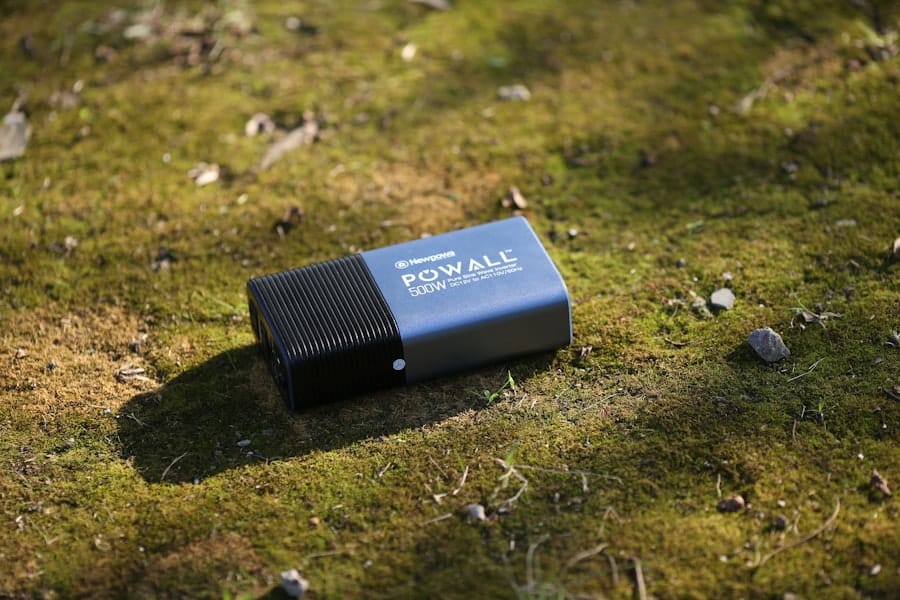The concept of a carbon footprint has gained significant traction in recent years, particularly as the world grapples with the pressing challenges of climate change. At its core, a carbon footprint refers to the total amount of greenhouse gases, primarily carbon dioxide, that are emitted directly or indirectly by an individual, organization, event, or product throughout its lifecycle. This measurement is typically expressed in equivalent tons of CO2.
The carbon footprint encompasses various activities, including transportation, energy consumption, food production, and waste generation. Understanding one’s carbon footprint is crucial for identifying areas where emissions can be reduced, thereby contributing to global efforts aimed at mitigating climate change. To illustrate the significance of carbon footprints, consider the average individual in the United States, whose annual carbon footprint is estimated to be around 16 tons of CO2.
This figure is substantially higher than the global average, which hovers around 4 tons per person. The disparity highlights the need for awareness and action, as high carbon footprints are often linked to unsustainable practices such as excessive car travel, reliance on fossil fuels for energy, and high meat consumption. By understanding the components that contribute to one’s carbon footprint, individuals and organizations can make informed decisions that lead to more sustainable lifestyles and practices.
Key Takeaways
- Carbon footprint is the total amount of greenhouse gases emitted directly or indirectly by human activities.
- Carbon tracking apps help individuals and businesses monitor and reduce their carbon footprint.
- Carbon tracking apps work by collecting data on energy usage, transportation, and consumption habits to calculate carbon emissions.
- Features of carbon tracking apps include carbon footprint calculators, personalized recommendations, and goal tracking.
- When choosing a carbon tracking app, consider factors such as user interface, data privacy, and compatibility with other devices and platforms.
Benefits of Carbon Tracking Apps
Carbon tracking apps have emerged as powerful tools for individuals and organizations seeking to monitor and reduce their carbon footprints. One of the primary benefits of these applications is their ability to provide users with real-time data on their emissions. By tracking daily activities such as transportation choices, energy usage, and dietary habits, users can gain insights into their carbon output and identify specific areas for improvement.
Moreover, carbon tracking apps often foster a sense of community among users. Many applications include social features that allow individuals to share their progress, challenges, and achievements with friends or a broader network.
This communal aspect can enhance motivation and accountability, as users are encouraged to adopt more sustainable practices collectively. Additionally, some apps gamify the experience by incorporating challenges or rewards for reducing emissions, making the process of tracking one’s carbon footprint not only informative but also engaging and enjoyable.
How Carbon Tracking Apps Work

Carbon tracking apps operate by collecting data on various activities that contribute to an individual’s or organization’s carbon emissions. Users typically input information related to their daily routines, such as transportation methods (e.g., driving, biking, public transit), energy consumption (e.g., electricity usage at home), and dietary choices (e.g., types of food consumed). The app then utilizes algorithms and databases that quantify the carbon emissions associated with these activities.
For instance, driving a gasoline-powered vehicle emits a certain amount of CO2 per mile traveled, while using renewable energy sources like solar power may have a negligible impact on one’s carbon footprint. Many apps also integrate with other platforms and devices to streamline data collection. For example, some applications can sync with fitness trackers to monitor physical activity levels or connect with smart home devices to track energy consumption automatically.
This integration allows for a more comprehensive view of an individual’s lifestyle and its environmental impact. Furthermore, some advanced apps employ machine learning techniques to analyze user behavior over time, providing personalized recommendations for reducing emissions based on historical data.
Features of Carbon Tracking Apps
The features offered by carbon tracking apps can vary significantly from one application to another, but several key functionalities are commonly found across many platforms. One essential feature is the ability to categorize emissions sources. Users can typically view their carbon footprint broken down into different categories such as transportation, home energy use, food consumption, and waste generation.
This categorization helps users pinpoint specific areas where they can make changes to reduce their overall emissions. Another important feature is the provision of educational resources and tips for sustainable living. Many apps include articles, videos, or infographics that inform users about the environmental impact of various activities and provide actionable steps for reducing their carbon footprints.
Additionally, some applications offer goal-setting capabilities that allow users to establish specific targets for emission reductions over time. These goals can be tailored to individual preferences and lifestyles, making it easier for users to stay motivated and track their progress.
Choosing the Right Carbon Tracking App
Selecting the right carbon tracking app can be a daunting task given the plethora of options available in the market today. When choosing an app, it is essential to consider factors such as user interface design, ease of use, and compatibility with other devices or platforms. A user-friendly interface can significantly enhance the experience by making it easier for individuals to input data and navigate through various features without feeling overwhelmed.
Another critical consideration is the app’s accuracy in calculating carbon emissions. Some applications rely on extensive databases that provide reliable estimates based on user inputs, while others may use generalized assumptions that could lead to inaccuracies. Reading user reviews and researching the methodologies employed by different apps can help potential users make informed decisions.
Additionally, it may be beneficial to choose an app that offers community features or social sharing options if motivation through peer support is important for the user.
Tips for Using Carbon Tracking Apps Effectively

To maximize the benefits of carbon tracking apps, users should adopt certain strategies that enhance their experience and effectiveness in reducing emissions. First and foremost, consistency is key; regularly inputting data about daily activities ensures that users receive accurate insights into their carbon footprints. Setting aside a few minutes each day or week to update the app can help maintain engagement and provide a clearer picture of progress over time.
Another effective strategy is to leverage the educational resources provided by many apps. Users should take advantage of articles or tips that offer guidance on sustainable practices tailored to their lifestyles. For instance, if an app suggests reducing meat consumption due to its high carbon footprint, users can explore plant-based recipes or local vegetarian restaurants as alternatives.
Engaging with these resources not only enhances knowledge but also fosters a deeper commitment to sustainability.
Impact of Carbon Tracking Apps on Consumer Behavior
The rise of carbon tracking apps has had a notable impact on consumer behavior by raising awareness about personal contributions to climate change. As individuals begin to understand the implications of their daily choices on their carbon footprints, many are motivated to adopt more sustainable habits. For example, users may choose public transportation over driving after realizing how much CO2 their car emits during commutes.
This shift in behavior reflects a growing consciousness about environmental responsibility. Furthermore, carbon tracking apps have the potential to influence purchasing decisions as consumers become more informed about the environmental impact of products and services. Many apps provide insights into the carbon footprints associated with various goods—such as clothing or electronics—encouraging users to opt for more sustainable options.
This shift in consumer behavior not only benefits individual users but also sends a message to businesses about the demand for environmentally friendly products.
Future of Carbon Tracking Apps
As technology continues to evolve, the future of carbon tracking apps appears promising with advancements in artificial intelligence and data analytics poised to enhance their functionality further. Future applications may incorporate more sophisticated algorithms that provide even more accurate emissions calculations based on real-time data from various sources. For instance, integration with smart city infrastructure could allow apps to access traffic patterns or energy consumption data directly from municipal systems.
Moreover, as public awareness about climate change grows, there is likely to be an increase in partnerships between carbon tracking apps and businesses aiming to promote sustainability initiatives. Companies may collaborate with app developers to offer incentives for consumers who reduce their carbon footprints through purchases or loyalty programs. This synergy could create a more robust ecosystem where individuals are rewarded for making environmentally conscious choices while businesses benefit from increased customer loyalty and brand reputation.
By providing valuable insights into personal emissions and fostering community engagement around sustainability efforts, these applications are poised to play a crucial role in addressing climate change challenges in the years ahead.
If you are interested in learning more about how technology is impacting our daily lives, you may want to check out the article “Hacker Noon Covers a Range of Topics Across the Tech Sector” from enicomp.com. This article discusses various topics within the tech sector, including the latest trends and innovations. It provides valuable insights into how technology is shaping our world and offers a glimpse into the future of tech.
FAQs
What is carbon tracking?
Carbon tracking is the process of measuring and monitoring the amount of carbon dioxide and other greenhouse gases emitted by an individual, organization, or activity.
How do carbon tracking apps work?
Carbon tracking apps work by allowing users to input their daily activities, such as transportation, energy usage, and consumption habits. The app then calculates the carbon footprint of these activities based on data and algorithms.
How do carbon tracking apps help consumers reduce their footprint?
Carbon tracking apps help consumers reduce their footprint by providing them with insights into their carbon emissions and suggesting ways to reduce them. This can include tips on energy conservation, sustainable transportation options, and eco-friendly purchasing choices.
What are the benefits of using carbon tracking apps?
Some benefits of using carbon tracking apps include raising awareness about individual carbon emissions, encouraging sustainable behavior changes, and contributing to the overall reduction of greenhouse gas emissions.
Are carbon tracking apps accurate?
The accuracy of carbon tracking apps depends on the quality of the data and algorithms used. While they may not be 100% precise, they can still provide valuable insights and guidance for reducing carbon footprints.

